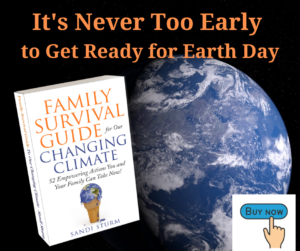
Wayne Sturm, Virtual Tour Photographer
We have spent the past four months parked in Tucson, Arizona where Mt. Lemmon looms above us to the north. It is a beautiful mountain with a wide variety of rocky peaks that captures the light a little different each night.
But what is more interesting is that when you drive the Mt. Lemmon highway up the Santa Catalina Range you find yourself in six very unique ecosystems. It truly is like driving from Mexico to Canada in just 27 miles with a climb of 6,000 feet.
This is a new type of post I would like to incorporate into the blog for you. We are all concerned about our changing climate, but we also need to appreciate what we are fighting for in the natural world. My life partner and husband, Wayne, is a virtual tour photographer and has agreed to provide interesting shots of places we hope you will enjoy.
The Six Zones of Mt. Lemmon
- Use your mouse (or finger if seeing on a phone) to drag the image a complete 360° in all directions.
- Use the “+ and – ” symbols to zoom in or out.
- Use the expand symbol to open full screen.

Sonoran Desert Zone
The journey begins on the desert floor just north of Tucson. The beautiful Sonoran desert seems to ignore the crowds of the city just a few blocks below as the Saguaro and cholla cactus present themselves as if to say welcome.
Elevation: 3,000 – 4,000 feet, mile 0 – 4
Average rainfall: 11 inches
Vegetation: Saguaro and cholla cactus, Creosote bush and Ocotillo
Temperatures: average 100+° in summer months
Semi-Desert Grassland Zone
The Saguaro forest fades into a landscape recognized by the lush grasslands. During the monsoon season this region seems to glow with green grasslands, and then fade to a golden color a few weeks later. We arrived in late August as the monsoon season was ending and were quite surprised to see green at the end of summer.
Elevation: 4,000 – 5,000 feet
Average rainfall: 14 inches
Vegetation: oak, juniper, and grasslands
Temperatures: a little cooler than valley floor
Oak Woodland and Chaparral Zone
This zone covers about 5 miles of the road and starts to look a bit like parts of the California mountains that surround the central valley, but with smaller oaks.
Elevation: 5,000 – 5,800 feet
Average rainfall: 17 inches
Vegetation: evergreen oaks, scrub oaks, manzanita, and buckthorn sagebrush
Temperatures: 5-10° cooler than valley floor
Pine-Oak Woodland Zone
For about 5 miles you travel through a pine and oak forest and much cooler temperatures. This would be a great place to stop for a picnic and chill after a hot day in the valley.
Elevation: 6,000 – 7,000 feet
Average rainfall: 20inches
Vegetation: pine and oak trees
Temperatures: 20-25° cooler than valley floor
Ponderosa Pine Forest Zone
I have to admit this is my favorite zone and it is also the largest zone, covering about 7 miles of the road. Ponderosa pines gives plenty of space underneath to walk and explore. I found a table rock to perch on – can you find me?
Elevation: 7,000 – 8,000 feet
Average rainfall: 23 inches
Vegetation: ponderosa pine
Temperatures: 25° cooler than valley floor
Mixed Conifer Forest Zone
This is the top area of the mountain. It includes a 4-wheel drive road down the back side of the mountain to Oracle, Arizona, the quaint village of Summerhaven, and Mt. Lemmon Ski Valley. The road ends at the parking lot of ski area, but there is a little more road that takes you up towards Mt. Lemmon SkyCenter Observatory and some awesome views.
Elevation: 8,000 – peak at 9,157 feet
Average rainfall: 26 inches (plus snow)
Vegetation: pines, firs, spruce, aspen
Temperatures: 30° cooler than valley floor









